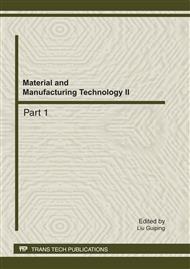p.226
p.231
p.242
p.247
p.252
p.256
p.261
p.265
p.271
The Channel Bending Forming Process of Ti-6Al-4V Blank Based on Finite Element Method
Abstract:
According to the actual work conditions, 3D FE model of channel bending forming is established on the platform of eat/DYNAFORM. Belytschko-Tsay (element # 2) in the cell library unit of eta/DYNAFORM is selected, and the geometric model is reasonably meshed by using topological mesh technology. In order to improve the accuracy, adaptive function is adopted. We established the proper material constitutive model for Ti-6Al-4V; gave a reasonable load curve by reasonable calculating and adjusting the loading time step in solving process; chose reasonable lubricant, provided practical coefficient of friction between the mould and blank in the simulation process by using the contact theory and classic coulomb friction law. Finally, we established the finite element model of the channel bending forming of Ti-6Al-4V actually, provided supplementary support for actual production.
Info:
Periodical:
Pages:
252-255
Citation:
Online since:
September 2011
Authors:
Keywords:
Price:
Сopyright:
© 2012 Trans Tech Publications Ltd. All Rights Reserved
Share:
Citation:


